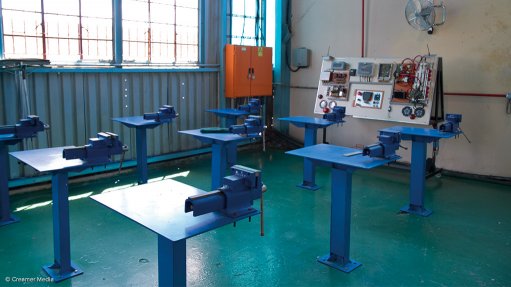
LOST APPRENTICES
Apprentice numbers at mines has dropped by about 25% to 30% in the past year
Photo by: Duane Daws
The number of apprentices accepted at mines has dropped by 25% to 30% in the past year, largely because of the spate of job cuts in the industry, with about 30 000 people joining the ranks of the unemployed since 2012, says black-owned Artisan Training Institute (ATI) director Sean Jones.
“Companies are not signing on new apprentices,” he states, adding that the lack of apprenticeship opportunities is evident across all industries, but is most prevalent in South Africa’s mining industry.
However, he points out that, despite cutting back on apprenticeships, “most of the companies [ATI is] exposed to are allowing apprenticeship contracts to run its course”, so that candidates receive their qualification as artisans.
Jones asserts that this trend is likely to remain while the global economy battles to recover, which he suspects is likely only in the next 24 to 36 months. He highlights that even the Chinese economy, whose gross domestic product is ranked second behind that of the US, will need to shift from being a global low-cost producer and supplier to an economy focused on domestic markets to stimulate growth.
To help rekindle the local job market, Jones suggests that South Africans should consider the small business sector for opportunities. However, he states that not enough is being done to stimulate positive growth in the sector, which he believes has become an ad hoc sector that has arisen from the necessity to survive rather than to promote entrepreneurship.
He suggests that retrenched artisans are likely to create apprenticeship opportunities, as they might start small businesses to earn a wage.
Although ATI has noticed a decrease in the number of clients signing on new apprentices, the company has secured new clients, many of which are operating new mining operations, Jones notes.
He suggests that new mining operations will further bolster apprenticeship opportunities, as they will aim to secure artisans who can operate and maintain equipment, more so at mines employing low-cost strategies such as underground mineral extraction.
Jones explains that mobile plants, which can be deployed at the seam, will significantly reduce the number of miners, but will increase the number of artisans needed to ensure the efficient operation of the plant.